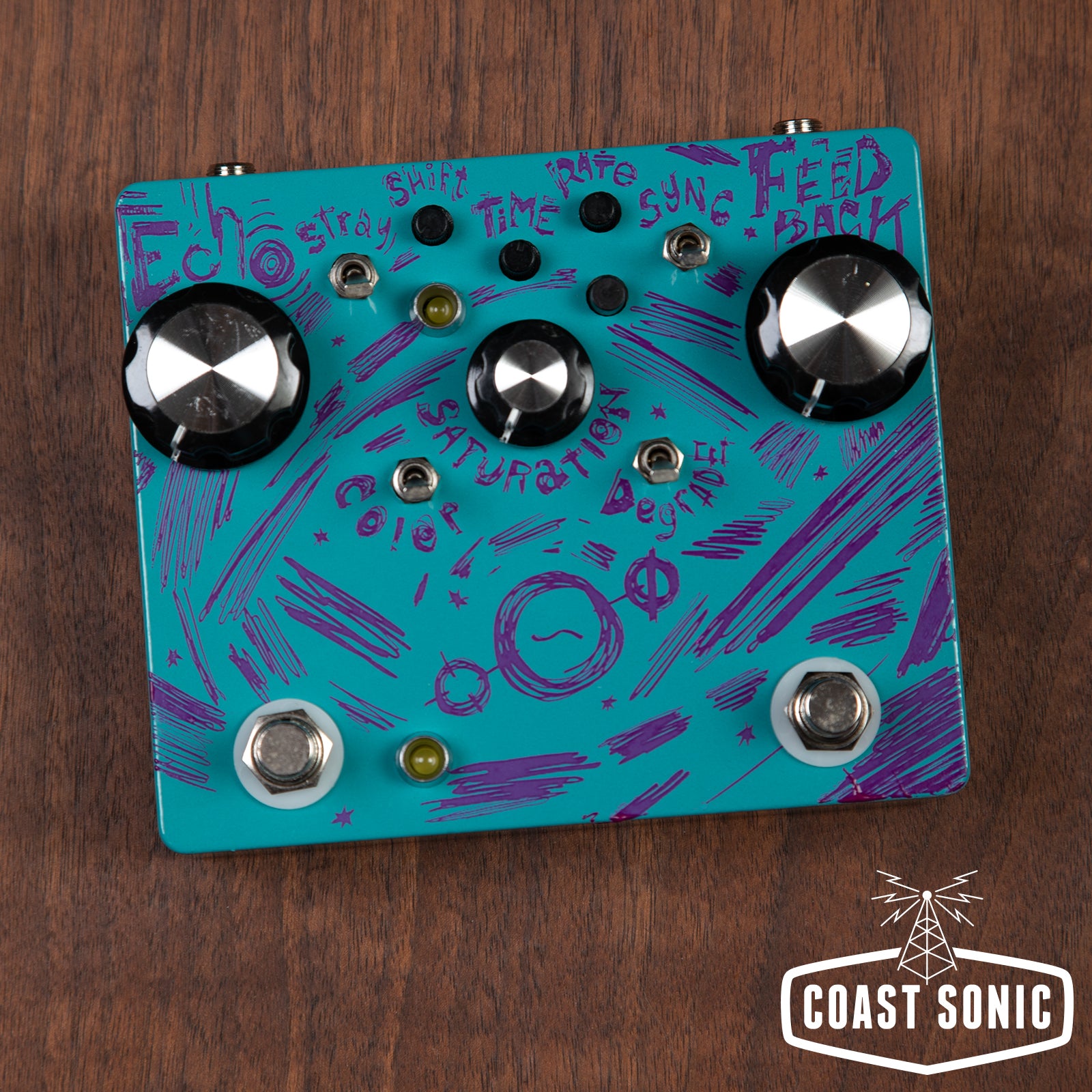Hungry Robot The Aether
Couldn't load pickup availability
Maker: Hungry Robot
Model: The Aether
Condition: New
Description:
The Aether is a modulating delay pedal.
The initial vision for the design of The Aether came shortly after the release of the Wardenclyffe Deluxe. I wanted to steal design philosophies and incorporate tonal characteristics that made the Wardenclyffe so special, but this time as a delay pedal.
At the heart of The Aether is a PT2399, tap tempo delay. It has the standard Echo, Feedback, and Time controls you would expect on any delay, but what makes it special is the Color, Saturation, and Degrade Controls. The Color toggle completely changes the character of the Aether and has two voices: Warm Analog and Bright Tape. The Saturation knob is a gain adjustment that overdrives the delay chip. In my opinion, the PT2399 chip takes gain and drive better than any other chip. The Degrade toggle adds lofi textures and artifacts to the delay line. The Degrade toggle removes a very vital section of the delay circuitry that keeps the delay stable with longer delay times. As you increase the delay time, the artifacts become more present and lofi.
The Aether uses a simple, but versatile modulation LFO core inspired by the Wardenclyffe, but with more features. The LFO cores sets it apart from other modulated delays out there. The speed of the modulation core can be set 3 different ways: Rate knob, tap tempo tact switch, and Sync toggle. When the Sync toggle is set to its middle position, the LFO can run at whatever speed you want. When the Sync toggle is in the up position it is synced to the delay time. When the Sync toggle is in the down position, it is synced to delay time, but in half-time for slower evolving moduation. The Shift knob determines the depth of the modulation and I promise that this has plenty of range in case you want to get really obscene. The Stray toggle changes the LFO from a typical Sine wave to a Slewed Random waveform. Creative exploration of the modulation section of The Aether is strongly encouraged. The way the delay rate and LFO rate interact with each other can yield very creative results.



